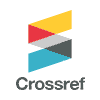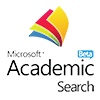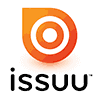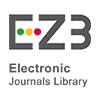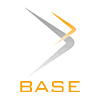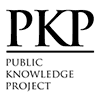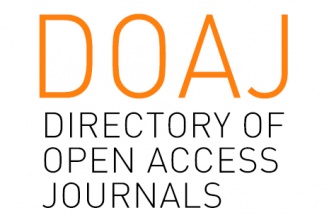Developing Flipped Content-Based English Materials for XI-Grade Fashion Program at Vocational High School
Abstract
This study aimed to develop Flipped Content-Based English Materials for eleventh-grade students in the Fashion study program at a vocational high school in Yogyakarta. The development process followed the model proposed by Jolly and Bolitho (1998), employing both qualitative and quantitative data collection methods. Quantitative data were obtained through questionnaires, while qualitative data were gathered through interviews. The findings address students’ necessities, lacks, and wants, highlighting gaps in their English proficiency. The materials were specifically designed to overcome common challenges requiring practical and communicative English skills relevant to the fashion industry. Six units were developed, combining the Flipped Learning Approach and Content-Based Instruction (CBI) to ensure material relevance to subject content and promote more effective learning by shifting instructional content outside the classroom while allocating in-class time for interactive activities. Expert validation categorized the materials as "very good," with a mean score of 3.5, within the range of 3.28 ≤ x ≤ 4.00. Student feedback from the materials' implementation indicated that the Flipped Content-Based English Materials facilitated engagement and comprehension, making English learning more meaningful and relevant to their future careers. Despite the positive outcomes, challenges were identified, particularly in ensuring student engagement with out-of-class activities. To address this, interactive multimedia resources and structured preparatory tasks were integrated to support comprehension and motivation. Overall, this study underscores the potential of integrating flipped learning and CBI in ESP contexts to enhance vocational high school students’ language proficiency and career readiness.
Keywords
Full Text:
PDFReferences
Amiryousefi, M. (2019). The incorporation of flipped learning into conventional classes to enhance EFL learners’ L2 speaking, L2 listening, and engagement. Innovation in Language Learning and Teaching, 13(2), 147–161. https://doi.org/10.1080/17501229.2017.1394307
Anuyahong, B., & Songakul, K. (2024). Analyzing The Effectiveness Of Content-Based Language Teaching (Cblt) Approaches In Integrating Language Learning With Subject Matter Instruction In Tefl Contexts. International Journal of Advanced Research, 12(07), 109–118. https://doi.org/10.21474/ijar01/19029
Basturkmen, H. (2010). Developing Courses in English for Specific Purposes. Palgrave Macmillan UK. https://doi.org/10.1057/9780230290518
Berwick, R. (1989). Needs assessment in language programming: From theory to practice (R. K. Johnson, Ed.; 1st ed., pp. 48–62). Cambridge University Press. https://doi.org/10.1017/CBO9781139524520.006
Bergmann, J., & Sams, A. (2012). Flip your classroom : reach every student in every class every day. International Society For Technology In Education.
Bergmann, J., & Sams, A. (2014). Flipped Learning. International Society for Technology in Education.
Brinton, D. M., & Snow, M. A. (2017). The Evolving Architecture of Content-Based Instruction. In The Content-Based Classroom: New Perspectives on Integrating Language and Content (2nd edition). University of MIchigan.
Branch, R. M. (2009). Instructional Design: The ADDIE Approach. Springer US. https://doi.org/10.1007/978-0-387-09506-6
Brinton, D. M., Snow, M. A., & Wesche, M. (1989). Content-Based Second Language Instruction. University of Michigan Press. https://press.umich.edu/Books/C/Content-Based-Second-Language-Instruction
Brown, H. D. (2007). Principles of Language Learning and Teaching. Pearson Longman. https://books.google.co.id/books?id=jUF0QgAACAAJ
Dick, W., Carey, L., & Carey, J. O. (2005). The Systematic Design of Instruction.
Dincer, A. (2020). Review of Flipping academic English language learning: Experiences from an American university. Language Learning & Technology, 24(2), 41–43. https://scholarspace.manoa.hawaii.edu/bitstream/10125/44723/1/24_02_10125-44723.pdf
Dörnyei, Z. (2001). Motivational Strategies in the Language Classroom. Cambridge University Press.
Dudley-Evans, T., & John, M. J. S. (1998). Developments in English for Specific Purposes. Cambridge University Press.
Fischer, I. D., & Yang, J. C. (2022). Flipping the flipped class: using online collaboration to enhance EFL students’ oral learning skills. International Journal of Educational Technology in Higher Education, 19(1), 1–24. https://doi.org/10.1186/s41239-022-00320-2
Gall, M. D., Gall, J. P., & Borg, W. R. (2007). Educational research: An introduction (7th ed.). Boston: Pearson Education.
Graves, K. (2000). Designing language courses: A guide for teachers. Heinle & Heinle.
Hwang, G.-J., Yin, C., & Chu, H.-C. (2019). The era of flipped learning: promoting active learning and higher order thinking with innovative flipped learning strategies and supporting systems. Interactive Learning Environments, 27(8), 991–994. https://doi.org/10.1080/10494820.2019.1667150
Hutchinson, T., & Waters, A. (1987). English for Specific Purposes. Cambridge University Press. https://doi.org/10.1017/CBO9780511733031
Jiang, M. Y.-C., Jong, M. S.-Y., Lau, W. W.-F., Chai, C.-S., & Wu, N. (2021). Using automatic speech recognition technology to enhance EFL learners’ oral language complexity in a flipped classroom. Australasian Journal of Educational Technology, 37(2), 110–131. https://doi.org/10.14742/ajet.6798
Lyster, R. (2007). Learning and Teaching Languages Through Content. In Lllt.18. John Benjamins Publishing Company. https://benjamins.com/catalog/lllt.18
Lyster, R. (2017). Content-Based Language Teaching. Routledge.
Miles, M. B., Huberman, A. M., & Saldana, J. (2014) Qualitative data analysis: A method sourcebook (3rd ed.). USA: Sage Publishing
Macalister, J., & Nation, I. S. P. (2019). Language Curriculum Design (2nd ed.). Routledge. https://doi.org/10.4324/9780429203763
Purwanti, I., & Wardani, H. K. (2024). Perspectives of Vocational High School English Teachers Regarding Kurikulum Merdeka. JURNAL PENA EDUKASI, 11(1), Article 1. https://doi.org/10.54314/jpe.v11i1.1759
Richards, J. C. (2001). Curriculum Development in Language Teaching. Cambridge University Press. https://doi.org/10.1017/CBO9780511667220
Richards, J. C. (2015). Key Issues in Language Teaching. Cambridge University Press. https://doi.org/10.1017/9781009024600
Richards, J. C., & Rodgers, T. S. (Eds.). (2001). Content-Based Instruction. In Approaches and Methods in Language Teaching (2nd ed., pp. 204–222). Cambridge University Press. https://doi.org/10.1017/CBO9780511667305.021
Rodgers, D. M. (2006). Developing Content and Form: Encouraging Evidence From Italian Content-Based Instruction. The Modern Language Journal, 90(3), 373–386. https://doi.org/10.1111/j.1540-4781.2006.00430.x
Sariani, S., Yaningsih, Y., & Rozi, F. (2022). Implementing Content-Based Instruction (CBI) on EFL Student’s Writing through Technology-Enhanced Language Teaching. Education Quarterly Reviews, 5(1). https://doi.org/10.31014/aior.1993.05.01.429
Stryker, S., & Leaver, B. L. (1997). Content-Based Instruction in Foreign Language Education. Georgetown University Press. http://press.georgetown.edu/Book/Content-Based-Instruction-in-Foreign-Language-Education
Tomlinson, B. (2011). Materials development in language teaching. Cambridge University Press.
Turan, Z., & Akdag-Cimen, B. (2019). Flipped classroom in English language teaching: a systematic review. Computer Assisted Language Learning, 33(5-6), 1–17. https://doi.org/10.1080/09588221.2019.1584117
Tsai, Y.-R. (2019). Promotion of learner autonomy within the framework of a flipped EFL instructional model: perception and perspectives. Computer Assisted Language Learning, 1–32. https://doi.org/10.1080/09588221.2019.1650779
Widodo, H. P. (2016). Teaching English for Specific Purposes (ESP): English for Vocational Purposes (EVP). In W. A. Renandya & H. P. Widodo (Eds.), English Language Teaching Today (Vol. 5, pp. 277–291). Springer International Publishing. https://doi.org/10.1007/978-3-319-38834-2_19
Xin, X., & Zhang, M. (2024). Effects of flipped English learning designs on learning outcomes and cognitive load: Workload of out‐of‐class activities versus during‐class activities. Journal of Computer Assisted Learning. https://doi.org/10.1111/jcal.12978
DOI: http://dx.doi.org/10.18415/ijmmu.v12i10.7115
Refbacks
- There are currently no refbacks.
Copyright (c) 2025 International Journal of Multicultural and Multireligious Understanding

This work is licensed under a Creative Commons Attribution-NonCommercial-NoDerivatives 4.0 International License.
https://ijmmu.com
editor@ijmmu.com
facebook.com/ijmmu
Copyright © 2014-2018 IJMMU. All rights reserved.







